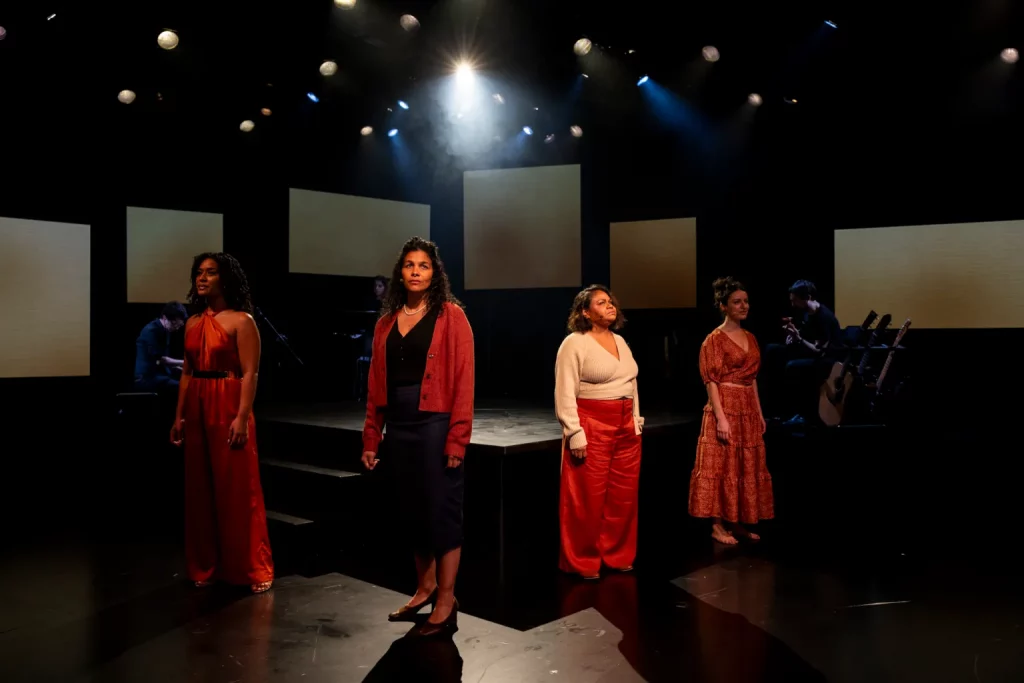“Our work should not strive to be safe or sanitary but to be felt,” writes Benjamin La.
It is a crowded auditorium. There are sounds of people talking and bags of chips rustling. I shuffle my way to my seat, saying the whole “excuse me, thank you.” It is slightly sticky and stained by a previous audience member. It creaks as it is pulled down. I sit. For a moment, I am painfully aware that I might be sitting a bit too far away, perhaps the man in front of me is a bit too tall.
The lights go off. Silence falls upon the audience. This is theatre.
Recently, a question has plagued me: “Why do you create stories for theatre?” There are other forms of artistic storytelling, which are definitely cheaper. I could write a book, paint a picture, or make a movie, but I have chosen this medium as a form of self-expression. What makes theatre different? What makes it special? To me, theatre’s beauty lies in its finality.
Theatre is intimate, with both the participants and the audience aware that this experience is impermanent. This version of this show will only happen once. It makes us want to listen better, watch closer, and feel more. We can rewind a movie or revisit an art gallery, but we can only watch this once. Our role as theatre makers is to honour the responsibility placed upon us. We have to create worlds that are alive, touch the audience, and mean something. We want to create stories that last beyond the theatre, we want them to carry these stories on their car ride home, the next morning, and all the mornings past that. To do this, we must tell stories that are true to who we are, hold a mirror to the world, and dream bigger. Pratha Nagpal, my mentor across Diversity Arts Australia’s StoryCasters Theatre-Making program, shared with us in the first lesson that theatre-making is world-building and truth-telling. As people of colour, our truths can oftentimes be confronting and uncomfortable for the traditional Australian theatre scene.
I hope that Australian theatre will see more stories written by us and for us. We need stories that are rooted within our culture and our language. For this to occur, there has to be a structural change, as our stories are still filtered through narrow lenses based on metrics of profitability, universality and social cohesion. There is a beauty in specificity. To hear work in a language you don’t understand, to see people moving in ways you never thought of, to be confronted by experiences unlike your own. Change is already happening, with the growth of Western Sydney theatre organisations like Powerhouse Youth Theatre in Fairfield, Riverside Theatre in Parramatta, and Q Theatre in Penrith, leading the way in creating theatre that is more accessible to local audiences and built on a model of collaboration and community. This change cannot be confined to Western Sydney. It must be reflected in the mainstage theatres, in the learning institutions and the general climate of Australian society.
Theatre is a powerful storytelling tool because of its fleetingness. It exists in the car rides home and our conversations with our friends. It asks us to suspend our disbelief, see the writer’s world and feel deeply about the character. As theatre makers of colour, we have the unique opportunity to touch audiences in a way that no other medium allows. Our work should not strive to be safe or sanitary but to be felt. There should be space in Australian theatre for people of colour to tell their stories, allowing them the freedom to do so their way.
This article was written for Diversity Arts Australia’s StoryCasters project, supported by Multicultural NSW, Creative Australia and Create NSW.

